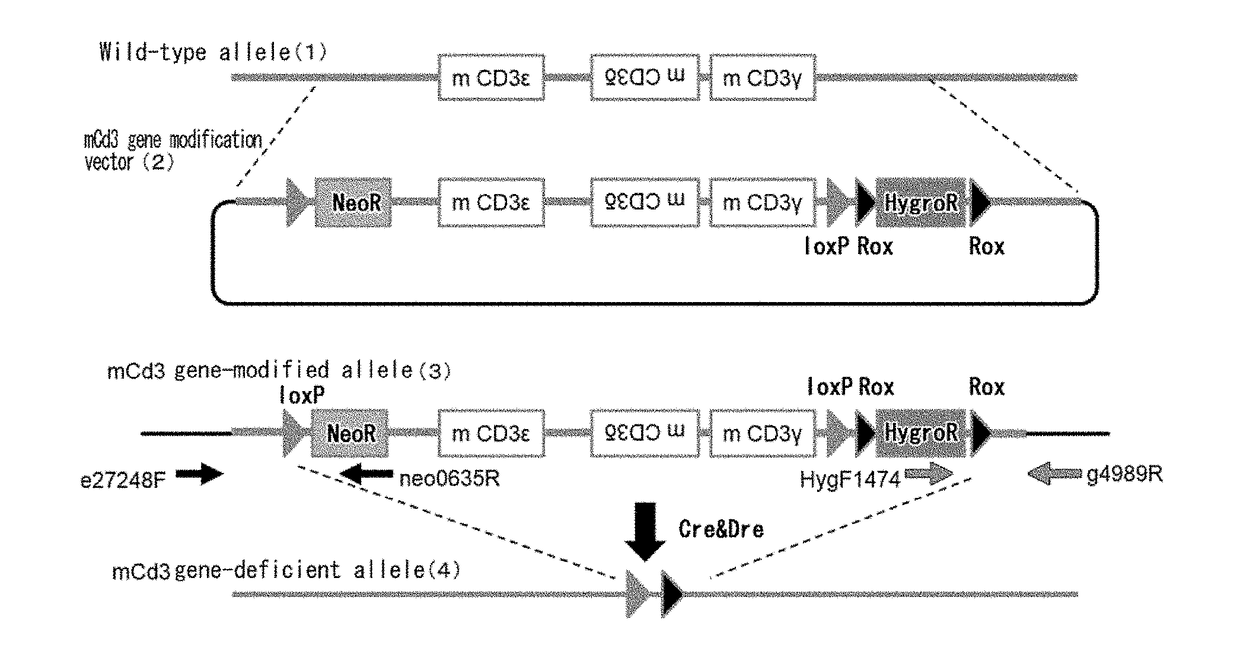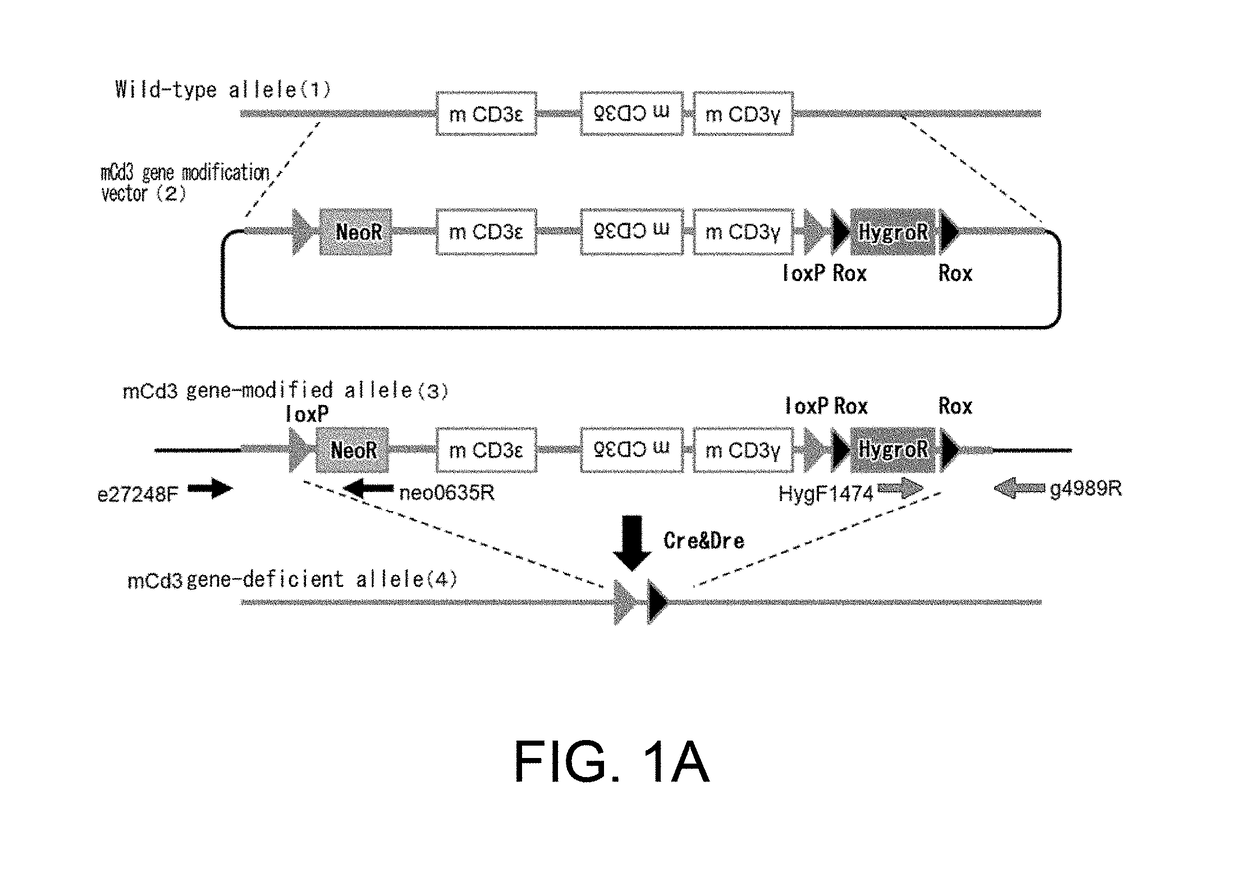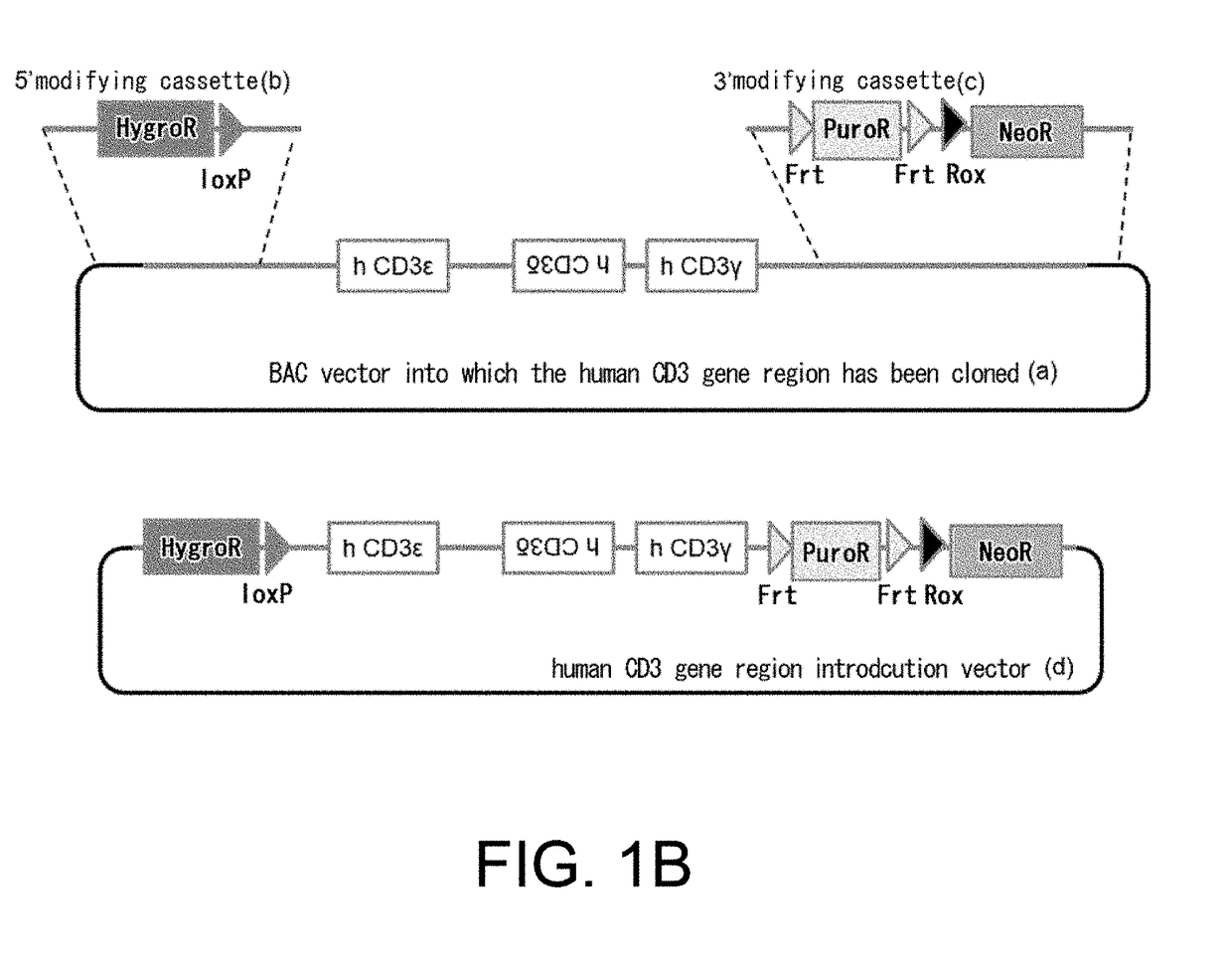Non-human animal having human cd3 gene substituted for endogenous cd3 gene
a technology of human cd3 and endogenous cd3 gene, which is applied in the field of human cd3 gene substitution of nonhuman animals, can solve the problems of inability to show hla-restricted immune response, human hematocyte differentiation is not completely reproduced, and the therapeutic antibodies having an additional function to activate t cells are difficult to evaluate through animal tests in preclinical studies
- Summary
- Abstract
- Description
- Claims
- Application Information
AI Technical Summary
Benefits of technology
Problems solved by technology
Method used
Image
Examples
example 1
n of Human CD3 Gene-Substituted Mice
[0305](1) Construction of a Mouse Cd3 Gene Region Modification Vector (FIG. 1A)
[0306]A bacterial artificial chromosome (BAC) clone was used, into which a genomic region where the mouse CD3ε, CD3δ, and CD3γ genes are positioned had been cloned. A loxP sequence was inserted at the position approximately 3.5 kb 5′ upstream of the gene region encoding mouse Cd3ε in this BAC, and the genome region further upstream was removed leaving approximately 3.1 kb. At that time, the loxP sequence was introduced together with neomycin-resistance (neo) gene cassette and insertion was conducted by homologous recombination using a Red / ET system (GeneBridges). In that case, from among the Escherichia coli clones that grew in a kanamycin-supplemented medium, clones for which polymerase chain reaction (PCR) method resulted in correct amplification were selected. Next, loxP sequence and Rox sequences were placed at 3′ downstream of the Cd3γ gene on the BAC. More specifi...
example 2
n of Cell Proliferation Ability of Spleen Cells in Human Cd3 Gene-Substituted Mice
[0333]Spleens were collected from mice (12-week old, male), and cells were isolated using 70 μm mesh. Erythrocytes were lysed by adding a hemolytic agent (manufactured by SIGMA). Phytohaemagglutinin (PHA, manufactured by SIGMA) which is a T cell mitogen was added to the isolated spleen cells, and after culturing for five days, MTS assay was carried out using a cell proliferation assay reagent (Cell Titer 96. Aqueous One Solution Reagent, manufactured by Promega). Cell proliferation activities of the respective genotypes are shown as relative proportions by defining the activity without mitogen addition as 1 (FIG. 9).
[0334]As a result, in spleen cells of the Cd3 gene-deficient mice, cell proliferation activity in response to mitogen stimulation tended to decrease compared to that when mitogen was not added, and was approximately 60% of that of wild-type mice. On the other hand, in spleen cells of the hu...
example 3
n of Cytokine Production in Spleen Cells of Human CD3 Gene-Substituted Mice
[0335]Spleen cells were prepared by collecting spleens from mice, isolating cells using 70 μm mesh, and lysing erythrocytes by adding a hemolytic agent. After culturing the cells for three days in the medium supplemented with phytohaemagglutinin (PHA) which is a T cell mitogen at a final concentration of 1 μg / mL, cytokines produced in the medium were measured (FIG. 10).
[0336]As a result, in spleen cells of the Cd3 gene-deficient mice, mitogen stimulated-cytokine production was not observed, whereas in the human CD3 gene-substituted mice, cytokine production was observed, indicating that the function of producing cytokines was restored.
PUM
| Property | Measurement | Unit |
|---|---|---|
| concentration | aaaaa | aaaaa |
| concentration | aaaaa | aaaaa |
| concentration | aaaaa | aaaaa |
Abstract
Description
Claims
Application Information
 Login to View More
Login to View More - R&D
- Intellectual Property
- Life Sciences
- Materials
- Tech Scout
- Unparalleled Data Quality
- Higher Quality Content
- 60% Fewer Hallucinations
Browse by: Latest US Patents, China's latest patents, Technical Efficacy Thesaurus, Application Domain, Technology Topic, Popular Technical Reports.
© 2025 PatSnap. All rights reserved.Legal|Privacy policy|Modern Slavery Act Transparency Statement|Sitemap|About US| Contact US: help@patsnap.com



